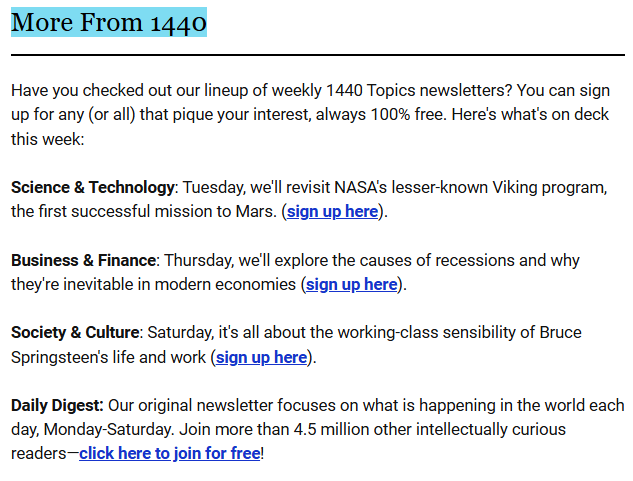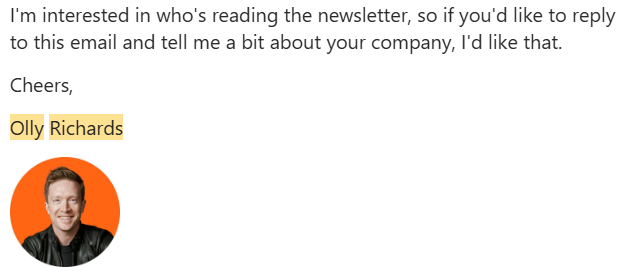The Hidden Fix for Falling Newsletter Engagement: Email Deliverability
Great newsletters fail when they don’t reach inboxes. Explore proven tactics to improve deliverability, boost engagement, and protect your sender reputation.
- Published
- Reading time
Cameron Smith is the Head of Growth at Letterhead, where he helps newsletter creators—from solo operators to enterprise publishers—grow their audiences and revenue through smarter marketing and monetization tactics. Before joining Letterhead, he scaled multiple SaaS companies and led editorial teams at a major digital media network. His work blends technical know-how with audience empathy, drawing on 12+ years of experience across email, content, and performance marketing. He frequently writes about newsletter growth, media business models, and the future of creator monetization. When he's not diving into metrics, Cameron enjoys writing fiction and discovering new coffee roasters.
When newsletter operators notice a drop in engagement, most jump to one conclusion: poor content.
But, what if the real problem is that your finely-crafted emails aren’t actually reaching your audience? Email Tool Tester’s study shows that around 17% of emails never reach the inbox.
Of course, poor content can be a culprit, but significant drop-offs are often the result of email deliverability issues.
Let’s unpack why this happens, how to spot it, and the steps you can take to fix it.
Why Engagement Drops Aren’t Always Content’s Fault
Most newsletter creators, especially ones with large audiences, put great care into their content. However, as sometimes happens, these brands see declining opens, clicks, sales, responses, or other engagement signals.
So, you spice up your subject lines, improve your preview text, add more images—but the engagement doesn’t budge.
Engagement Metrics Are Only as Good as Deliverability
It might seem obvious, but many brands ignore this simple fact:
You can’t engage readers who don’t see your email.
If they’re not seeing your email, then your open and click rates drop. Mailbox providers (like Gmail or Apple Mail) notice that emails from you aren’t getting as much interaction.
So, they start to assume that your emails are low quality and deliver fewer of them to recipients’ inboxes.
It’s a difficult cycle to break, but with a few clever tactics, you can rescue dropping deliverability.
Understanding Email Deliverability
Deliverability is a complex topic, so let’s break it down first to understand how to address it.
What “Deliverability” Really Means
First, let’s specify the difference between “delivery” and “deliverability”:
- Delivery - Did the recipient’s inbox actually accept your email? Sometimes, Gmail or other providers will block the email outright due to a blacklisted domain, full inbox, or another reason. Your email marketing software will usually tell you your delivery rate, and this number should be very high, especially if you’re working with a clean list (95%+).
- Deliverability - After the inbox provider accepts your email, where is it delivered? Deliverability refers to emails that are delivered to the inbox, rather than being sent to spam or junk folders.
Let’s say you send 1,000 emails. Perhaps 20 bounce, meaning that 980 emails were delivered. Of those, 50 went to the spam folder. In this case, 930 out of 1,000 emails made it to the inbox, resulting in a 93% deliverability rate.
What About Promotions or Updates Tabs?
Many inbox providers these days automatically sort incoming emails into different tabs. For example, Apple Mail (the largest provider in the world) has tabs for Primary, Transactions, Updates, and Promotions.
An email counts towards deliverability if it’s delivered to any of those tabs. In theory, if 100% of your emails are sent to the Promotions tab, your deliverability would be 100%.
Of course, that’s not the goal, but just as a point of clarification moving forward.
Key Factors That Affect Deliverability
Here’s a quick list of what actually affects your newsletters’ deliverability:
- Sender Reputation - A score assigned to your sending domain based on how well your emails are received.
- List Hygiene - How well you maintain a list of accurate and engaged email addresses.
- Engagement Signals - Positive signals include opens and clicks, while negative signals include unsubscribe and spam rates.
- Technical Setup - Do you have the proper email authentication protocols in place to prove that you are a trusted sender?
- Content Flags - No spammy words, image-heavy emails, or link shorteners.
Warning Signs of Email Deliverability Issues
When it comes to deliverability, what’s the proverbial canary in the coal mine? Here are a few of the most common warning signs.
Only Certain Segments Experience Dropping Open Rates
One of the most obvious warning signs is when deliverability issues are isolated to a certain mailbox provider.
Each mailbox provider (e.g., Gmail, Apple Mail, Outlook) has their own filtering algorithm and sender reputation.
It’s essential to track campaign analytics by provider, like this:
|
Mailbox Provider |
Open Rate |
Click Rate |
Bounce Rate |
|
Gmail |
16% |
1.9% |
0.6% |
|
Outlook |
33% |
4.1% |
0.2% |
|
Yahoo |
31% |
3.8% |
0.1% |
In the example above, clearly there’s an issue with Gmail. You can be fairly certain that it’s not content issues, or else you’d see a drop in engagement across the board.
While Gmail keeps a separate algorithm, your deliverability issues are likely to become a global problem if you don’t fix them now. Outlook, Yahoo, and other providers have similar factors in their algorithms, so they’ll eventually deliver fewer of your emails as well.
Increased Spam Complaints or Unsubscribes
While both of these are negative signals, mailbox providers understand that some unsubscribes are normal—healthy, even. They have a minimal reputation impact.
Spam complaints, on the other hand, have a serious impact. Some providers have set thresholds of 0.3% spam rate (3 per 1,000 emails sent). However, most experts agree that senders should strive for 0.1% or lower.
Increasing Bounces or Unverified Leads
Mailbox providers closely monitor bounce rates as a signal of sender trustworthiness. When you send emails that bounce, that’s a classic sign of spammy behavior.
Legitimate senders are expected to maintain clean lists. This means they:
- Send to people who have actually opted in to their list.
- Delete bounced emails as they happen.
- Remove unsubscribes.
Promotions Tab vs Primary Inbox
As mentioned earlier, delivering to non-Primary tabs may not impact the literal definition of “deliverability,” but it certainly affects your engagement.
And that will eventually affect your deliverability.
Make sure that you’re constantly monitoring which tabs your emails are being delivered to. Use a tool like InboxAlly or Glock Apps to keep a close eye on this.
Proven Fixes for Email Deliverability
Email deliverability is like a credit score—it’s easy to destroy, but takes time to rebuild. Here’s how you can increase your deliverability.
Send Only to Opted-In Contacts
Many brands make the mistake of adding contacts to their newsletter who haven’t requested it. This commonly happens in these instances:
- A brand starts a second newsletter and adds everyone already subscribed to their first newsletter.
- A company with a large list of past leads dumps them all at once into their newsletter list.
- The opt-in form is for something other than a newsletter.
- Brands acquire another brand and send their newsletter to all their newly-acquired leads.
Here’s the thing:
Of course you want to send all those people your newsletter. You just have to be smarter about it.
The first step would be to ask the leads if they want to opt in to your newsletter. For example, here’s how 1440 promotes their other newsletters inside their primary publication:

This will only convert a small percentage, but it also allows you to segment them as a higher-engagement segment.
What about the rest?
It’s a natural impulse to mass-send to the rest as well, but that’s a recipe to destroy your deliverability, fast.
That really leaves you three options:
- Don’t add them at all. Be content that those you can get to opt-in are the ones most interested anyway.
- Use a cold email software. Services like Instantly are designed to send cold emails with automatic domain warm-up and the ability to rotate through many sending accounts. You can be more aggressive in advertising your newsletter with software like this. Or, in theory, send your newsletter using your cold email software for the foreseeable future.
- Add a small percentage of leads at a time. By adding 5% or less of the contacts to your list per week, you can avoid a big jump in spam and unsubscribe rates.
Clean Your List Regularly
The best long-term strategy for keeping deliverability high is to remove leads that are dragging down engagement.
First, you’ll need to decide on which segments you’ll want to delete. Here are a few ideas:
- No opens for X days - With privacy settings, determining an individual’s engagement based on opens is trickier.
- No clicks for X days - Clicks are a better engagement metric; however, there are plenty of people who read newsletters that never click. Also, determining how many days must pass without engagement before deleting is a brand-specific decision. If you only send once a week, set it to 90 days. If you send every day, perhaps set it to 21 days.
- Hard Bounces - These are an obvious “delete immediately” case, and most email software removes them right away. Ensure this is happening with yours.
- Soft Bounces - These are temporary inbox issues, but you may want to delete them anyway because those recipients are more likely to cause future deliverability issues.
It’s common for brands to choose a time frame (say, 90 days) and delete anyone who hasn’t opened or clicked in that time frame. The “or” is important because people can have clicks recorded without an open due to privacy settings.
Segment By Engagement
A slightly more advanced strategy is to send fewer emails to people who don’t click as often.
For example, let’s say that you send a once-a-week newsletter. You likely want to send that to everyone each week.
But, you might also send one-off marketing emails or the occasional product launch series. It’s better for your engagement metrics and deliverability to send those to your top 50% most engaged.
There’s also a strategy where you send out your emails in batches based on engagement. You would send to your most engaged segment first, followed by your less engaged segments in 30-minute (or so) intervals.
Those first emails draw high engagement, signaling to mailbox providers that your email is worth delivering to even the less engaged segments of your list.
Use Custom Sending Domains
If you’re sending with any volume, it’s likely you’re already doing this, but it’s worth mentioning:
Always send from a custom sending domain that you own.
For example, don’t send from John@gmail.com or John@send.convertkit.com.
Rather, send from John@YourDomain.com.
This way, you can:
- Build your own sender reputation.
- Pass authentication where your “From” address matches SPF, DKIM, and DMARC settings.
- Look more professional.
Optimize Content for Spam Filters
There are a few important ways you can optimize the content of your emails to avoid poor deliverability:
- Don’t be overly promotional. Stuffing your emails with these 188 common spam words will increase the likelihood of landing in spam folders or Promotions tabs.
- Use fewer images. Images are often blocked, cause slow load times, and look more promotional. Spammers often try to hide text in images to avoid spam filters.
- Clear unsubscribe links. Obscured unsubscribe links increase the likelihood that the recipient will mark your email as spam, which can harm your sender reputation. Also, it’s legally mandated that you have an unsubscribe link in your emails.
Encourage Engagement & Whitelisting
The best way to ensure your emails get delivered to Primary Tabs is to have readers who engage with the email. Clicks, replies, and especially dragging the email to a Primary Tab are all excellent indicators to mailbox providers that your emails are useful and wanted.
Many newsletter operators encourage engagement in their welcome email. Here’s how Olly Richards does this in a non-threatening way in his welcome email:

Some prefer to be more direct and say things like “Drag this email to your Primary Inbox to ensure you’ll continue to get my newsletter.”
Test Deliverability Before Every Big Send
Especially for brands with larger lists, it’s a great idea to run through a few checks before every send to increase your chances of high deliverability.
As mentioned previously, start by using tools like GlockApps or InboxAlly. You can get a good idea of inbox placement results.
Then, use a tool like Mail-Tester to see the likelihood of being marked as spam. Shoot for a 9+ score.
Track Metrics Beyond Opens
Opens are often considered a vanity metric—one that brands like to track and improve, but there are more important ones to focus on.
For example, clicks, replies, and ultimately conversions are more important indicators of your list’s actual engagement with your newsletter.
Key Takeaways
When you see deliverability start to fall, content is the easy scapegoat. Is it your subject line? Or are your readers just losing interest?Often, the real issue is that fewer people are seeing your emails.
Here’s what to keep in mind:
- Content Isn’t The Problem (Usually) - Especially if you have a track record of quality content, don’t rush to rework your entire newsletter if engagement drops. Look at deliverability indicators first.
- Diagnose Early - Deliverability issues compound over time. The sooner you spot warning signs (such as spam complaints, mailbox-specific engagement drops, or bounce spikes), the easier it is to reverse them.
- Clean data + Good Reputation = Sustainable Growth - Deliverability shouldn’t be “set and forget” until a major issue arises. Focus on sending trusted content to people who want to see it, and you’ll build a sender reputation that keeps your emails landing front and center.
